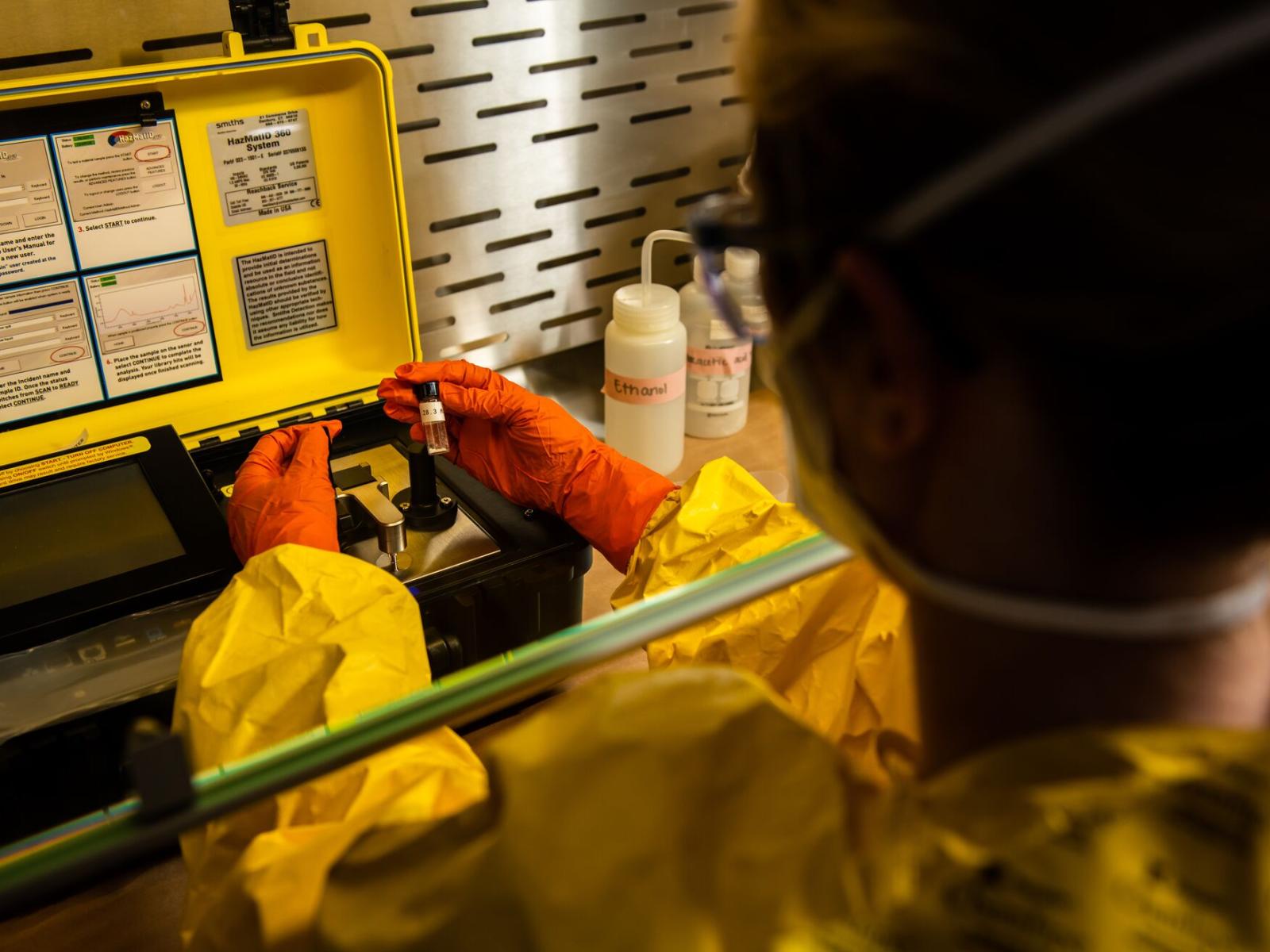Report Assesses Portable Fentanyl Detection Instruments for First Responders
Equipment evaluated against updated spectra, standards

Pacific Northwest National Laboratory helped assess field-portable detection products used by first responders to detect illicit substances, like fentanyl, in the field.
(Photo by Andrea Starr | Pacific Northwest National Laboratory)
Synthetic opioids, such as modified fentanyl analogs, can be up to 100 times more potent than fentanyl itself and therefore more dangerous to first responders who encounter them in the field. Unfortunately, detection equipment manufacturers often struggle to keep pace with the ever-changing makeup of these illicit substances. This point is exemplified by the fact that these substances are not always in pure form and are often mixed with cutting agents that can interfere with detection. The U.S. Department of Homeland Security (DHS) Science and Technology Directorate (S&T) and Pacific Northwest National Laboratory (PNNL) recently published an assessment of field-portable detection products against updated compound libraries and testing standards.
“The more we understand about these emerging substances and the equipment we use to detect them, the greater protection and safety we can deliver to the first responder community encountering this threat,” said Kristin Omberg, senior technical advisor and acting director of homeland security programs.
The report, “Performance Assessment of Field-Portable Instruments and Assays for Fentanyl and Fentanyl-Related Compounds Test Report,” captures the results of rigorous testing and evaluation of 17 detection instruments and eight assays. Test samples included a suite of pure fentanyl analogs, 1 percent and 10 percent fentanyl mixtures, and other pure or mixed compounds created to mimic real-world scenarios. The work sought to expand spectral libraries of portable instruments, improve detection of fentanyl analogs, and establish limitations of commercial products commonly used by the first responder community.
The commercial off-the-shelf narcotics detection systems were equipped with upgraded chemical detection libraries established by PNNL. A bigger library widens the aperture on substances a first responder can identify during an encounter. Next, the equipment underwent a series of tests against challenging standards that were also developed by PNNL with S&T funding and published by the American Society for Testing and Materials International. The standards, informed by manufacturers and first responders alike, guide performance and use of fentanyl detection equipment in the field.
The publicly available report was published earlier this month and details the results to inform the procurement of field detection systems by DHS partners, first responder agencies, and other end users.
“A major goal of this project was to make the results of our assessment accessible with the hope of improving detection of opioids and to ultimately increase safety within the first responder community and of individuals affected by illicit opioids,” said Ashley Bradley, biomedical scientist.
The project leveraged the expertise of PNNL’s controlled substance authorized personnel trained to work with controlled substances as well as experts in mass spectrometry and statistics. Together, the team was able to safely prepare, validate, measure, and analyze the necessary samples and the corresponding data. In addition to controlled substances, the team leveraged expertise in analyzing higher-risk materials and backgrounds in optical and mass spectrometry to validate the data collected for library expansion and standards testing.
DHS S&T funded PNNL to conduct the research and prepare the report. To learn more about current partnerships and research to address the opioid threat, check out “Knowledge Is Power in the Fight Against Synthetic Opioids” or visit PNNL’s Contraband Detection web page.
Published: February 27, 2024
Bradly, A., Mo, K. F., Melville, A., Saunders, D. Jensen, S., Lin, V., Mobberley, J., Doll, C., Orton, D., Heredia-Langner, A. 2023. Performance Assessment of Field-Portable Instruments and Assays for Fentanyl and Fentanyl-Related Compounds. Pacific Northwest National Laboratory.